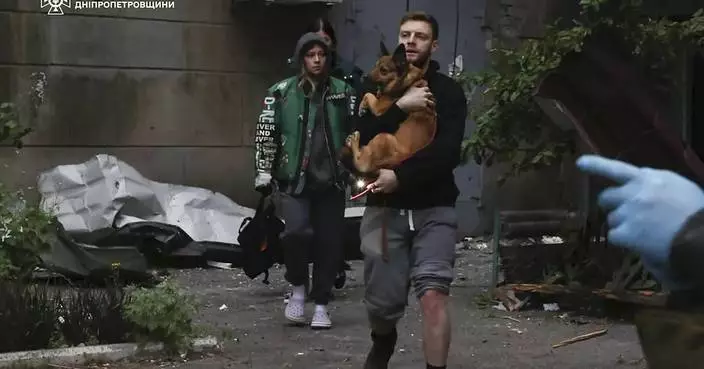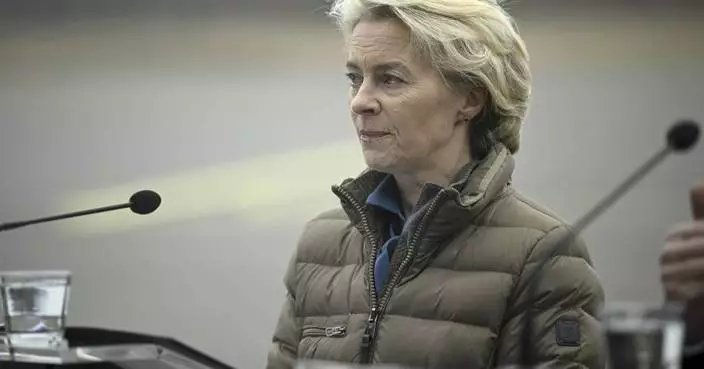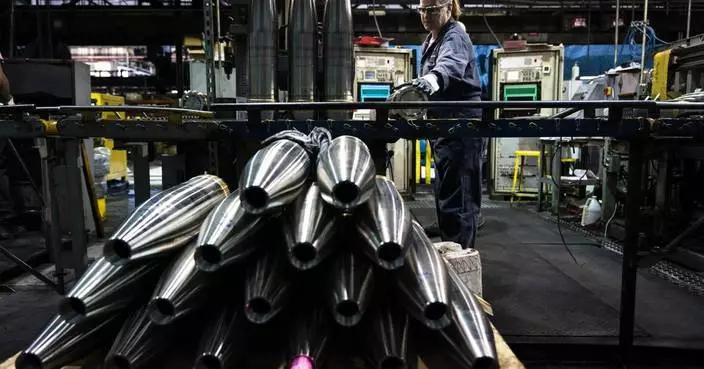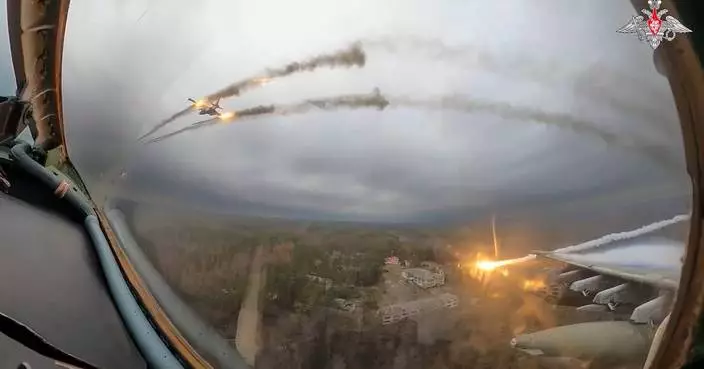Russia's latest space launch failures have prompted authorities to take a closer look into the nation's struggling space industry, the Kremlin said Thursday.

FILE - In this Tuesday, Nov. 28, 2017 file photo, a Russian Soyuz 2.1b rocket carrying Meteor M satellite and additional 18 small satellites, flies in the sky at the new Vostochny cosmodrome outside the city of Tsiolkovsky, about 200 kilometers (125 miles) from the city of Blagoveshchensk in the far eastern Amur region, Russia.(AP Photo/Dmitri Lovetsky, File)
A Russian weather satellite and nearly 20 micro-satellites from other nations were lost following a failed launch from Russia's new cosmodrome in the Far East on Nov. 28. And in another blow to the Russian space industry, communications with a Russian-built communications satellite for Angola, the African nation's first space vehicle, were lost following its launch on Tuesday.
Asked about the failures, President Vladimir Putin's spokesman, Dmitry Peskov, said Thursday that authorities warrant a thorough analysis of the situation in the space industry.
Amid the failures, Russian officials have engaged in a round of finger-pointing.
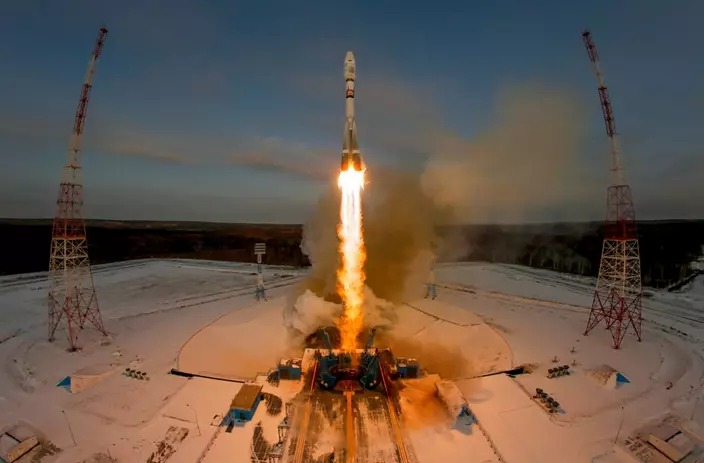
FILE - In this Tuesday, Nov. 28, 2017 file photo, a Russian Soyuz 2.1b rocket carrying the Meteor M satellite and additional 18 small satellites lifts off from the launch pad at the new Vostochny cosmodrome outside the city of Tsiolkovsky, about 200 kilometers (125 miles) from the city of Blagoveshchensk in the far eastern Amur region, Russia.(AP Photo/Dmitri Lovetsky, File)
Deputy Prime Minister Dmitry Rogozin, who oversees Russia's military industrial complex and space industries, said in a television interview Wednesday that the Nov. 28 launch from the new Vostochny launch pad in Russia's Far East failed because the rocket had been programmed to blastoff from the Russia-leased Baikonur launch pad in Kazakhstan instead of Vostochny. He accused the Russian space agency Roscosmos of "systemic management mistakes."
Roscosmos fired back Thursday, dismissing Rogozin's claim of the flawed programming. It did acknowledge some shortcomings that led to the launch failure and said a number of officials were reprimanded.
Rogozin quickly riposted on Facebook, charging that Roscosmos was "trying to prove that failures occur not because of mistakes in management but just due to some 'circumstances.'"
The cause of the failure of the Angolan satellite hasn't been determined yet. Communications with the satellite, which was built by the Russian RKK Energia company, a leading spacecraft manufacturer, were lost after it entered a designated orbit.
Russia has continued to rely on Soviet-designed booster rockets to launching commercial satellites, as well as crews and cargo to the International Space Station. A trio of astronauts from Russia, Japan and the United States arrived at the space outpost last week following their launch from Baikonur.
While Russian rockets have established a stellar reputation for their reliability, a string of failed launches in recent years has called into question Russia's ability to maintain the same high standards for manufacturing space equipment.
Glitches found in Russia's Proton and Soyuz rockets in 2016 were traced to manufacturing flaws at the plant in Voronezh. Roscosmos sent more than 70 rocket engines back to production lines to replace faulty components, a move that resulted in a yearlong break in Proton launches.
The suspension badly dented the nation's niche in the global market for commercial satellite launches. Last year, Russia for the first time fell behind both the U.S. and China in the number of launches.
While Russia plans to continue to use Baikonur for most of its space launches, it has poured billions of dollars in to build the new Vostochny launch pad. A launch pad for Soyuz finally opened in 2016, but another one for the heavier Angara rockets is only set to be completed in late 2021 and its future remains unclear, drawing questions about the feasibility of the expensive project.
Work at Vostochny also has been dogged by scandals involving protests by unpaid workers and the arrests of construction officials accused of embezzlement.
HELENA, Mont. (AP) — BNSF Railway attorneys told a Montana jury Friday that the railroad should not be held liable for the lung cancer deaths of two former residents of an asbestos-contaminated Montana town, one of the deadliest sites in the federal Superfund pollution program.
Attorneys for the company say the corporate predecessors of the railroad, owned by Warren Buffett’s Berkshire Hathaway conglomerate, didn't know the vermiculite they hauled over decades from a nearby mine was filled with hazardous microscopic asbestos fibers or that asbestos was dangerous.
BNSF attorney Chad Knight said the railroad could only be held liable if it could have foreseen the health hazards of asbestos based on information available decades ago when the alleged exposures happened.
“In the 50s, 60s and 70s no one in the public suspected there might be health concerns,” Knight said.
The case in federal civil court is the first of numerous lawsuits against the Texas-based railroad corporation to reach trial over its past operations in Libby, Montana. Current and former residents of the small town near the U.S.-Canada border want BNSF held accountable for its alleged role in asbestos exposure that health officials say has killed several hundred people and sickened thousands.
The seven-member jury met briefly Friday and planned to resume deliberations on Monday morning. They were instructed to decide if the railroad was at fault in the deaths and if so, the amount of damages to award to their estates. If the jurors find that the railroad should also face punitive damages, a separate hearing would determine that amount.
Looming over the proceedings is W.R. Grace & Co., a chemical company that operated a mountaintop vermiculite mine 7 miles (11 kilometers) outside of Libby until it was closed 1990. The Maryland-based company played a central role in Libby's tragedy and has paid significant settlements to victims.
U.S. District Court Judge Brian Morris has referred to the the chemical company as “the elephant in the room” in the BNSF trial. He reminded jurors several times that the case was about the railroad's conduct, not W.R. Grace's separate liability.
How much W.R. Grace revealed about the asbestos dangers to Texas-based BNSF and its corporate predecessors has been sharply disputed. The plaintiffs argued that railroad higher-ups were aware, but that workers on the ground in Libby were left out of the loop.
“We're here to make a party that accepts zero responsibility accept an appropriate amount of responsibility,” plaintiffs' attorney Mark Lanier said. “This is the fault of the bigwigs in the corporate office.”
The judge instructed the jury it could only find the railroad negligent based on its actions in the Libby Railyard, not for hauling the vermiculite.
The railroad said it was obliged under law to ship the vermiculite, which was used in insulation and for other commercial purposes. It said W.R. Grace employees had concealed the health hazards from the railroad.
Former railroad workers said during testimony and in depositions that they knew nothing about the risks of asbestos. They said Grace employees were responsible for loading the hopper cars, plugging the holes of any cars leaking vermiculite and occasionally cleaned up material that spilled in the rail yard.
The estates of the two deceased plaintiffs have argued that the W.R. Grace’s actions don’t absolve BNSF of its responsibility for failing to clean up the vermiculite that spilled in the railyard in the heart of the community.
Their attorneys said BNSF should have known about the dangers because Grace put signs on rail cars carrying vermiculite warning of potential health risks. They showed jurors an image of a warning label allegedly attached to rail cars in the late 1970s that advised against inhaling the asbestos dust because it could cause bodily harm.
Family members of Tom Wells and Joyce Walder testified that their lives ended soon after they were diagnosed with mesothelioma. The families said the dust blowing from the rail yard sickened and killed them.
In a March 2020 video of Wells played for jurors and recorded the day before he died, he lay in a home hospital bed, struggling to breathe.
“I’ve been placed in a horrible spot here, and the best chance I see at release — relief for everybody — is to just get it over with,” he said. “It’s just not something I want to try and play hero through because I don’t think that there’s a miracle waiting.”
The Environmental Protection Agency descended on Libby after the 1999 news reports. In 2009 it declared in Libby the nation’s first ever public health emergency under the federal Superfund cleanup program.
The pollution in Libby has been cleaned up, largely at public expense. Yet the long timeframe over which asbestos-related diseases develop means people previously exposed are likely to continue getting sick for years to come, health officials say.
Brown reported from Billings, Montana.
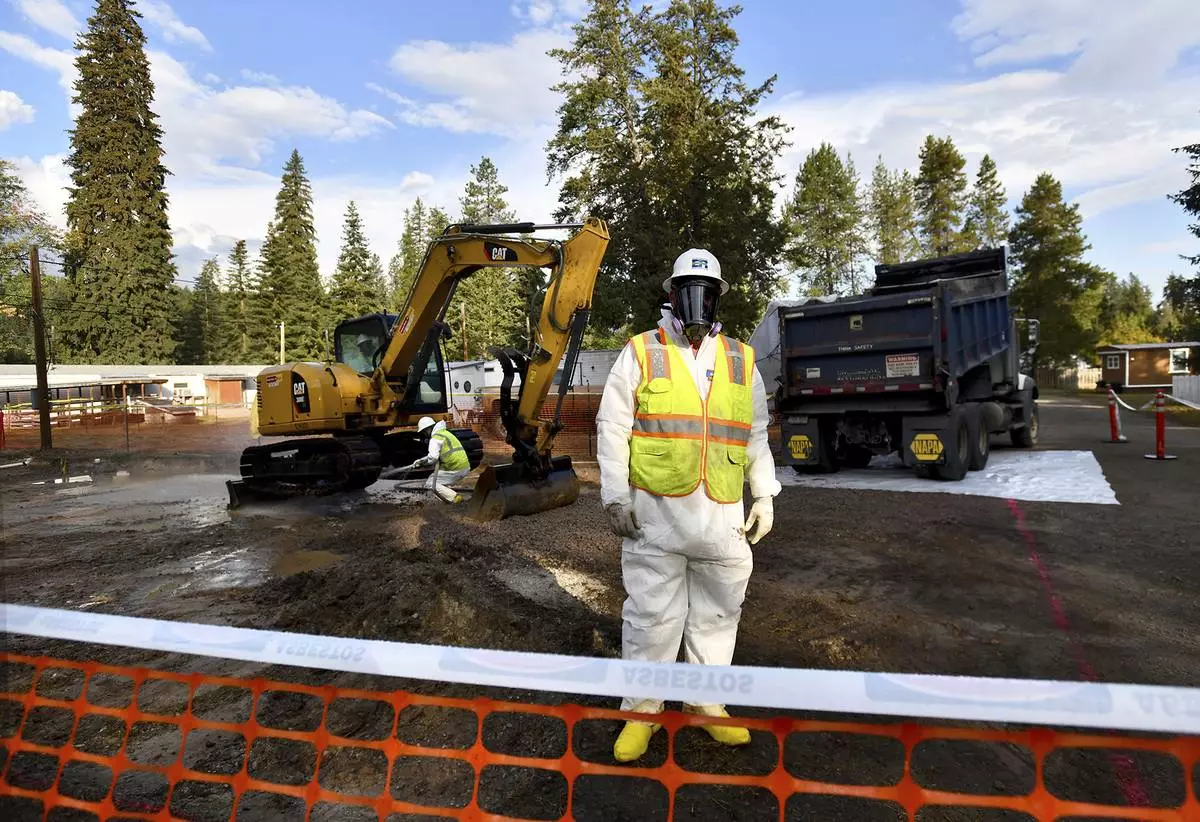
FILE - Environmental cleanup specialists work at one of the last remaining residential asbestos cleanup sites in Libby, Montana, in mid-September. BNSF Railway attorneys are expected to argue before jurors Friday, April 19, 2024, that the railroad should not be held liable for the lung cancer deaths of two former residents of the asbestos-contaminated Montana town, one of the deadliest sites in the federal Superfund pollution program. (Kurt Wilson/The Missoulian via AP, File)

FILE - Dr. Lee Morissette shows an image of lungs damaged by asbestos exposure, at the Center for Asbestos Related Disease, Thursday, April 4, 2024, in Libby, Mont. BNSF Railway attorneys are expected to argue before jurors Friday, April 19, 2024, that the railroad should not be held liable for the lung cancer deaths of two former residents of the asbestos-contaminated Montana town, one of the deadliest sites in the federal Superfund pollution program. (AP Photo/Matthew Brown, File)
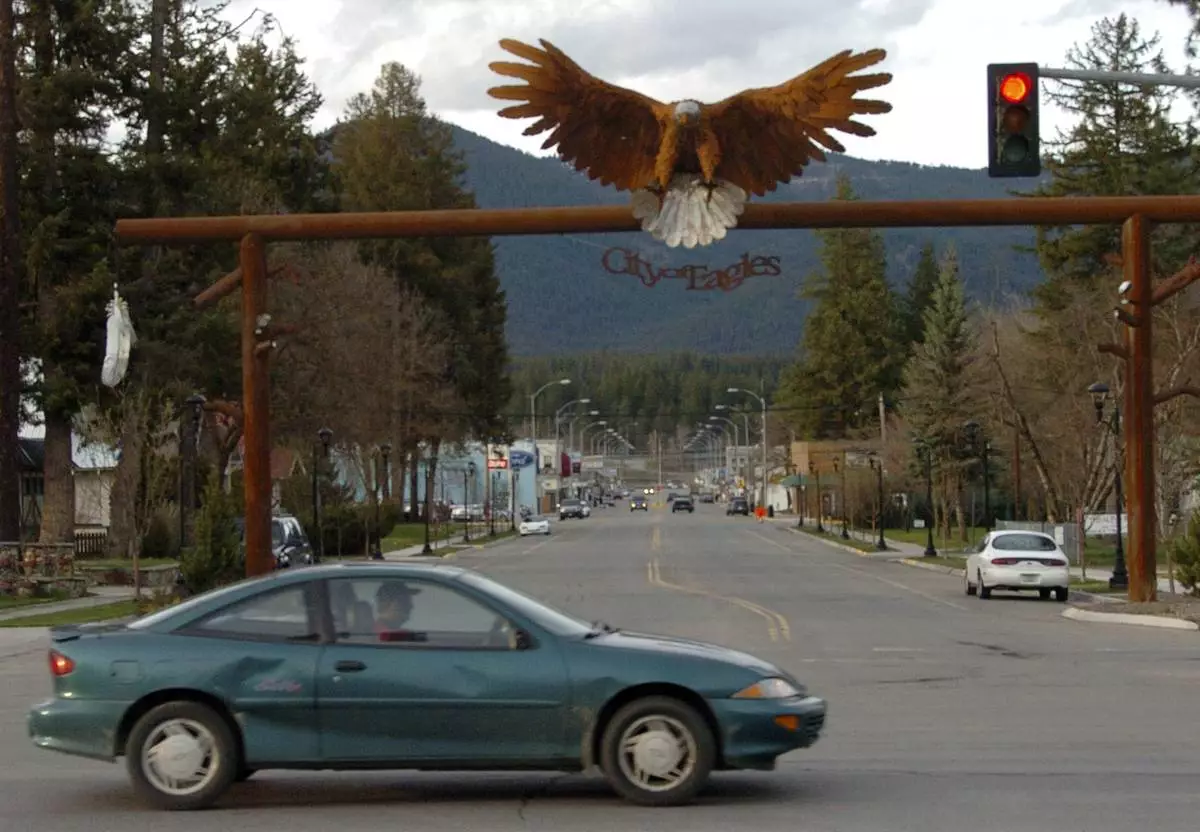
FILE - In this April 27, 2011, file photo, the entrance to downtown Libby, Mont., is seen. BNSF Railway attorneys are expected to argue before jurors Friday, April 19, 2024, that the railroad should not be held liable for the lung cancer deaths of two former residents of the asbestos-contaminated Montana town, one of the deadliest sites in the federal Superfund pollution program. (AP Photo/Matthew Brown, File)









